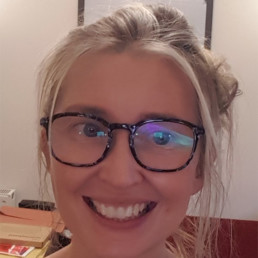
Written by Angel Hinkley
Mathematics Teacher & facilitator of the Anti-Racism Society at Drumchapel High School.
Just finished watching Jamie Oliver’s programme on dyslexia, and I’m left with so many thoughts—questions buzzing in my mind, especially as someone who is dyslexic myself. These questions feel so fundamental — yet perplexingly remain on the periphery of our educational discourse.
Why, truly, is early diagnosis not treated as an absolute, non-negotiable priority? What kind of training will teachers actually receive—training that helps them recognise dyslexia, nurture different minds, shift their understanding, reshape their approach, and see the brilliance beneath the difference? Who writes these programmes? Who decides? And crucially—will any of the architects have walked this path themselves, peering through the same fog, navigating the same hidden gaps?
Before I started school, I felt… normal. Confident. My dad said I knew my own mind. I was curious, chatty, and bold. Part of growing, of course, is the necessary challenging of that self-assurance, a healthy friction. But what awaited me was not friction, but an unhealthy shift, a fundamental reordering of my landscape that would cast long, often difficult, shadows.
The first chill of difference settled in a primary school classroom. Something about the learning – the way letters danced, the way sounds refused to anchor themselves to symbols – felt intrinsically wrong. I’d just been given glasses, and I recall my father’s anxious voice, wondering aloud if these new lenses were the problem: “My daughter has turned thick!” Harsh words, yet spoken not in cruelty, but in the fear of a parent watching his child struggle, change, her spark dimming and not knowing why.
My dad sought answers at a specialist centre. I remember the tests vividly. Not the content, but my desperate strategy: to outsmart them. To answer not as I would, but as I imagined a ‘normal’ person would. I didn’t want to be me. And then came the diagnosis: dyslexia. I felt it. Deeply. They told my dad that the good news was I had worked so hard in the tests, I might one day be “average.”
Average.
The consolation? That the effort I’d exerted in trying to conform was ‘outstanding!’ With such effort, they predicted, I might one day become ‘average’! I knew that ‘average’ was no comfort to a father’s hopes. I felt broken and flawed. The implication was clear: my inherent way of thinking was a deficit, my ‘normal’ was unacceptable, and the highest aspiration offered was mediocrity measured against a standard I could never truly meet. What I didn’t yet understand was that I was navigating not my own failure, but the failure of a system that couldn’t see me.
But that very day, my dad turned it into joy. We did what Londoners, rushing headlong through their own lives, so rarely do: we became tourists in our own city. We paused before landmarks we’d never really seen—Parliament, the Tower, the Thames, the Changing of the Guard, St Paul’s with its whispering galleries. To this day, I still love to go there, with such fond memories in my mind—fun, love, comfort and self-assurance; forever etched my heart. It was, I think, the seed of the resilience I would come to need. Because school didn’t get easier.
The remaining primary years unfolded with a particular kind of quiet humiliation. My books contained few words—simple stories, devoid of the depth that excited my curious mind, hidden under the desk in shame. I was taken from the classroom for ‘special lessons’, but I couldn’t tell you what I learned—only how it felt to leave the classroom: different, embarrassed.
Education became a world where I was perpetually misunderstood. Learning was relentlessly dumbed down. Later choices only compounded the frustration: English Literature was replaced with Typing (a cruel irony for any dyslexic!), and Classical Studies replaced Latin — a subject I now realise could have helped me, through the understanding of word structure and roots: morphology.
Dyslexia, I have come to understand, is complex. It is, fundamentally, a different way of learning. It is also, undeniably, a disability. Even typing that word, owning it, is hard. I say it with reluctance. Mainly because of the world’s ongoing inability to understand it without seeing it as something lesser. People still judge.
But the truth is, navigating the world through a different lens brings unique strengths. And yet, within our education systems, we remain anchored to the standard measure.
It’s taken me decades to learn that some of my struggles—like not hearing certain phonetic sounds—were neurological. I’ve had my hearing tested countless times. Turns out, it wasn’t my ears—it was my brain. No one told me that. I found out from a documentary. If diagnosed early, those sounds could’ve been taught, reshaped in my brain’s formative years. That early window—so often dismissed—matters. It could have spared the burden I carry every day.
For me, this auditory gap is profoundly disabling. Because when you can’t hear a sound properly, you can’t pronounce it. And when you can’t pronounce it, you can’t spell it. The cycle repeats.
Correction becomes constant—and even well-meaning correction starts to sting. Sometimes, the correction offers a fleeting clue. Mostly, it washes over me, leaving only a residue of quiet despair. Negative thoughts creep in. Do they think I simply wasn’t paying attention? Do they think I’m stupid? Beneath the surface lies a persistent whisper: I am stupid. I know I’m not. But feelings rarely ask permission from logic. It reinforced that deeper feeling of a system not seeing me. Only my mistakes. I mask it well, most people would never guess.
Yet, amidst these shadows, glimmers of hope emerge. Remarkable work is being done—work that focuses not on forcing the dyslexic brain into a neurotypical mould, but on teaching it in the way it learns best. I’ve discovered morphology— the structure, origin, and meaning of words. Learning to break down words into roots, prefixes, and suffixes has eased the burden of spelling and pronunciation. It’s been a quiet revelation. As an adult, time is limited, and progress is slow but undeniable within the safety of my own home. But out in public, where my confidence falters, the words still come out wrong. Had this been the way I was taught in school, it would have ignited my mind and my pronunciation and spelling would have improved.
I also discovered SQR (Survey, Question, Read) —a structured strategy to navigate dense texts. First, you survey the text (titles, headings, summaries). Then you question—what do I want to learn? Finally, you read actively to find key ideas. This gives reading structure and purpose—an intellectual pathway I wish I’d known earlier.
How many classrooms teach strategies like these? How many teachers even know they exist—or are given the time to explore them? What else is out there, still undiscovered?
The concept of “mixed abilities” feels ripe for reimagining. It shouldn’t merely be about different paces on the same track, but about genuinely exploring how we learn differently, how our diverse strengths can weave together to create a richer understanding. It should expand our notion of intelligence, not constrain it.
I work with many neurodiverse young people, including those who are autistic, those with ADHD, and those whose paths diverge from my own. Each day, their unique lens on the world — their capacity for empathy, their brilliant insights — deepens my understanding — my passion for life. I listen. They teach me how to teach. They show me how wide the world truly is. Yet I, too, must navigate it—stuck within the rigid constraints of education itself. And it’s a constant balancing act. But I see the cost. I see the toll it takes on these young people—the strain on their mental health, the erosion of their resilience, the crushing weight of perfectionism; a common trait in those who feel they don’t belong but are desperately trying to. The fear of imperfection is ever-present.
I hear the echoing mantra of ‘raising attainment.’ And then I think of what Jamie Oliver’s programme reminded us: we, the neurodiverse, make up around 25% of every classroom. One in four. That’s not a problem to be fixed. That’s a revolution waiting to happen. And still… we lose too many. Bright minds stranded on the shores of a curriculum that never saw them. Children who think they are broken, simply because the mirror they’re shown is cracked and narrow. I see it and feel it in them.
And what is attainment measured by? Tests designed for neurotypical processing? By curriculum that value rote learning over deep structural understanding or creative insight?
So, I write this for them. For the children still sitting in classrooms thinking they are less. For the educators who are trying—but feel unsure, overwhelmed, or simply don’t have the time to learn and explore. For the architects of future programmes: please, build with us, not just for us.
We are not broken. We are not failed versions of a system that was never built for us. We are different minds, with different strengths, waiting not to be fixed, but to be seen.

